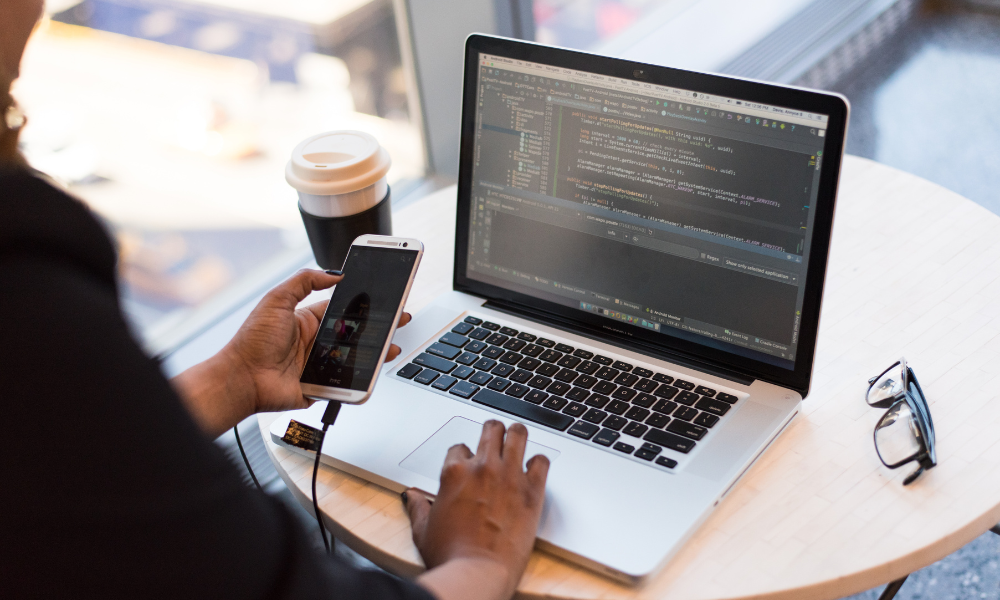Jun 27th 2025

Article Provided by PolicyBee
Thinking about getting cyber insurance? It’s a great idea for small businesses, especially when the government says 50% of UK businesses experienced a cybersecurity breach or attack last year.
But not all cyber insurance policies are created equal.
Depending on what you buy, you might not be covered for some of the most common techniques that cybercriminals use. Or for the income you’ll lose if you can’t trade because of a cyber-attack.
Cyber insurance helps protect your business from the damaging repercussions of cyber-attacks, data breaches, and cybercrime.
If you’re hit by one of these, it’ll usually:
Sounds great, right? It is! Basic cyber insurance gives you a reliable safety net. But you need to be aware of what it often doesn’t cover.
For some types of cybercrime, you’ll generally need to add some extra cover to your insurance.
Social engineering and financial cybercrime are commonly the most important things missing from basic cyber insurance.
Social engineering is a deception and manipulation tactic used by cybercriminals to con you out of your cash. Think phishing emails and fake websites.
Financial cybercrime is where cybercriminals get direct financial gain by infiltrating your systems. Things like identity fraud and payment system hijacking.
If you’re worried about either of these (and maybe you should be), you should check if you’ll need to add them on when you buy your insurance.
If a cyber-attack knocks down your systems, you might not be able to trade as normal. For small businesses, this could cost you thousands of pounds a day. And give your reputation a real knock.
Basic cyber insurance often doesn’t pay you for these missing days when your systems are being restored.
For that, you’ll need cyber business interruption. It pays you a set amount per day. Just as with financial cybercrime, you may need to add this on when you buy your insurance.
Need a broker to take care of your business insurance needs? Click here to get your personalised quote with PolicyBee and get started today!
Jun 16th 2025

As your business grows, deciding where and how to work has never been a more complex decision. The traditional office, once the default workspace, is now just one of several viable options. In particular, virtual offices have gained significant popularity, thanks to their flexibility, cost-efficiency, and modern approach to business operations.
Whether you’re launching a start-up or scaling an established company, the workspace you choose can have an impact your growth and daily workflows. So how do you decide between a traditional office and a virtual office? In this blog, we compare both options and what they could mean for your long-term success.
A traditional office provides a dedicated physical space where teams can collaborate in real-time and foster a strong company culture. Key benefits include the ability to hold in-person meetings, facilitate the rapid exchange of ideas, and create an environment that reinforces team identity and core values.
However, these advantages come with considerable costs. Leasing, furnishing, and maintaining a physical office often demands substantial financial investment, often a challenge for growing businesses. Long-term lease agreements also reduce flexibility, making it harder to scale up or down without disruption. In today’s fast-moving business landscape, agility and adaptability often outweigh the benefits of a fixed location.
Virtual offices eliminate many of the limitations associated with traditional workspaces by providing essential business services, without the high overheads or long-term commitments. Rather than investing in a physical space, you can secure a prestigious address that instantly boosts your brand’s credibility and client confidence.
Most virtual office packages include professional mail handling, telephone answering, and on-demand access to meeting rooms. As your business evolves, this flexible model scales with you, removing the need for costly relocations or complex lease negotiations.
Technology plays a vital role in the success of virtual offices. With tools like video conferencing, project management software, and instant messaging, teams can collaborate seamlessly and remain productive from any location.
However, virtual offices aren’t ideal for every business. Some teams benefit from the daily in-person interaction and spontaneous collaboration that a shared physical space offers. Additionally, businesses in industries that rely on face-to-face engagement, may find a traditional office more suitable for their needs.
The best workspace depends on your team’s working style, industry demands, and business goals. Some companies thrive with in-person collaboration, while others prioritise flexibility cost savings, and remote capabilities.
Many growing businesses now embrace a hybrid model, combining remote work with occasional face-to-face meetings. In these cases, a virtual office offers the perfect balance, providing professionalism and structure without the financial burden. It allows you to project a strong business presence, manage admin efficiently, and remain agile as your needs evolve.
We provide flexible, affordable virtual office solutions designed for ambitious businesses. Whether you need a prime address, expert mail handling, or reliable call answering, our tailored packages are crafted to suit the needs of every business.
You’ll also have the flexibility to book meeting rooms at our respected UK locations in London, Ipswich, and Edinburgh. In addition, you can confidently showcase your business address on your website, invoices, and marketing materials — enhancing your credibility and helping your brand stand out in a competitive market.
Explore our virtual office packages today and give your business the support it deserves.
Jun 6th 2025
Article by GoSimpleTax

Would it surprise you to learn that less than 60% of UK small businesses use accounting software?
By law businesses must keep accurate, complete records of their income and expenses/costs, so that they can reliably complete their tax returns. The remaining 40% of small businesses use spreadsheets, manual records or a combination of both.
So, why don’t more small businesses use accounting software? It can provide a wealth of benefits to business owners and small private landlords. Various myths, misconceptions and phobias are a factor, while some simply don’t realise how accounting software could benefit them. So, if you currently don’t use accounting software, here are six perfectly good reasons why you should start…
Small businesses and small private landlords must of course minimise their costs if they are to maximise their profits. And you should never buy things unless there is a valid business reason, because it just adds unnecessary pressure to your cash flow. If you don’t need it, don’t buy it – it really is that simple.
You may think accounting software would cost a few hundred quid a year or more, however, a monthly subscription can cost about a tenner a month, which is significantly less than the price of one take-away coffee a week. And it can be claimed as a tax expense, so accounting software needn’t be an additional cost at all.
Top tip! Decide what functionality you really need from your accounting software and consider recommended options. Don’t pay more for additional “bells and whistles” features that you’re never going to use.
Many small-business owners and landlords are put off accounting software because they think you need to be an accountant to use it. Not true. Many business owners and landlords with very basic knowledge use accounting software. The best accounting software is remarkably easy to use – you certainly don’t need to be an accountant or bookkeeper. Even if you have no knowledge now, in no time at all you’ll learn what you need to know, to get what you need from your accounting software.
Top tip! When considering accounting software options, find out what level of onboarding and customer support you’ll get. If you get stuck, you should be able to quickly get the support you need to overcome any problems/challenges.
Many tasks are automated within accounting software, meaning key figures are worked out for you, which will certainly make your life much easier when it comes to completing your tax returns. Accounting software can also be linked to credit card or business bank accounts, so that income and expenses are automatically entered after they reach or leave your account. Accounting software often comes with free invoicing capability, too, so you can produce invoices and chase payments when overdue.
Need to know! Accounting software can also make it much quicker and easier to judge how well your business is performing, as well as organise and assess your expenses. IT can also help you to keep your cash flow healthy.
Because so many tasks are automated or made far easier by accounting software, you can save lots of time, certainly when compared to manual book keeping. This means you need to spend less time doing your books, freeing you up to get on with things that you enjoy or that contribute more value to your business.
Need to know! Investing in the right accounting software could be a real game-changer as regards your time and workload, with many tedious tasks made easier and quicker, saving you lots of time and money.
Why not try before you buy? Many providers offer you free, no-obligations trials, so you can get a better idea of how their accounting software works and how quick and easy it is to work with. A free trial provides you with the no-risk, no-obligation way to road test accounting software features, functionality and performance in realistic scenarios, before you commit to a subscription. If you’re not impressed, explore other options.
Need to know! Read online reviews on Trustpilot and other platforms when comparing accounting software options. Find out not only what other users think, but also how providers respond to feedback, good and bad.
Making Tax Digital is a major government initiative to digitise the UK tax system.
About 780,000 sole traders and landlords with a gross trading/rental income of more than £50,000 will be impacted by brand new MTD for Income Tax rules from 6 April 2026, with a further 970,000 impacted from April 2027 and many more (£20,000-£30,000 gross income) from April 2028.
If you’re already using accounting software, you shouldn’t be worried about MTD for Income Tax, providing it’s MTD compatible. If not, get software that is. If you’re not already using accounting software, you really should start doing so as soon as possible, so that MTD recording and reporting isn’t a drama for you.
Need to know! There will be fines for non-compliance with MTD for Income Tax. Very few people will be granted exemption and compliance isn’t optional. To comply with recording and reporting requirements, you must have the necessary accounting software and know how to send summaries digitally to HMRC.
About GoSimpleTax
Simple, straightforward and designed to save you time and money. GoSimpleTax is a fully HMRC recognised online tax software for anyone who needs to file a Self Assessment tax return.
Get started with GoSimpleTax today and take advantage of a 30 day free trial.